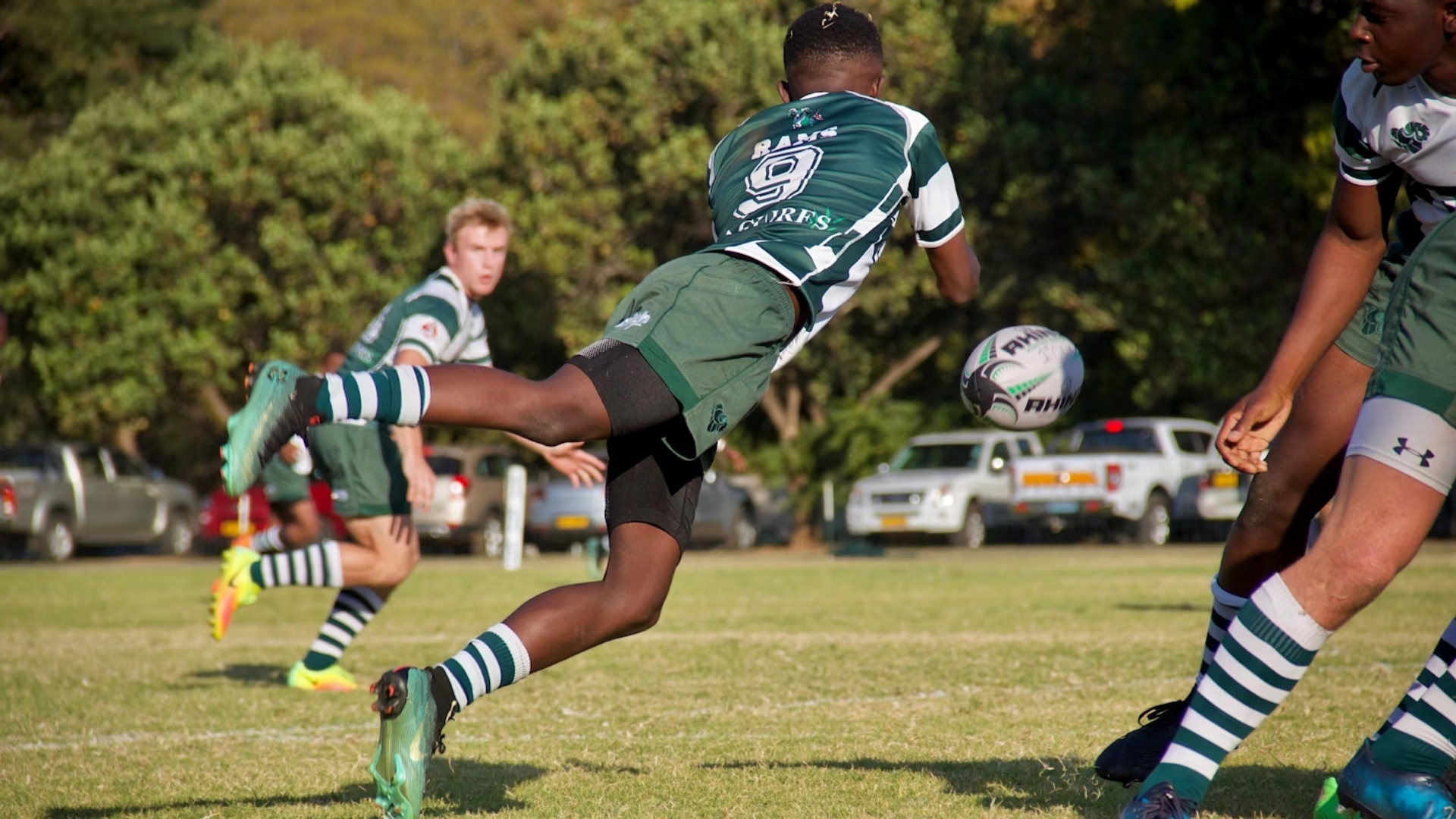A knock-on in rugby is a crucial rule that can instantly change the course of a match, impacting possession and gameplay.
Let’s dive into this game-defining concept that every rugby fan should grasp.
The Basics: What Exactly is a Knock-on?
Simply put, a player who fumbles the ball forward commits a knock-on.
A knock-on happens when a player loses possession and the ball travels forward off their hands or arms.
But it’s not a forward pass. A knock-on is usually accidental, not intentional.
When Does a Knock-on Occur?
Knock-ons happen in various scenarios:
- During a catch attempt
- While passing
- When tackled
Knock-ons can be made by anybody, and even rugby legends like Jonny Wilkinson and Dan Carter are not spared from making this accidental fumble.
The Aftermath: What Happens After a Knock-on?
When a knock-on happens:
- The referee blows the whistle
- The opposing team gets awarded a scrum
- Possession changes hands
The referee, however, may call advantage if the non-offending team gains a tactical edge.
Instances like these is when the game gets interesting.
Avoiding Knock-ons: Mastering Ball Control
To minimise knock-ons, players must focus on:
- Proper hand positioning
- Maintaining focus during tackles
- Effective communication with teammates
These skills are honed through rigorous training and match experience.
Knock-ons in Game Strategy
Defensive teams often apply pressure to force knock-ons.
It’s a smart tactic to regain possession.
On offense, players must balance aggression with careful ball handling to avoid costly errors.
Rugby Union vs Rugby League: The Knock-on Difference
While both codes penalise knock-ons, Rugby League has a unique “six-tackle” rule.
This adds an extra layer of strategy when dealing with knock-ons.
Understanding these nuances is crucial for fans of both variants.
Memorable Knock-on Moments in Rugby History
History has witnessed a few knock-ons, some more impactful than the others.
Of course, there was the controversial knock-on in the 2007 Rugby World Cup quarterfinal between France and New Zealand.
These incidents remind us how a single knock-on can shape rugby history, which up to this day remains points of discussions for players and fans alike.
The Science Behind Knock-ons: Why They Happen
Knock-ons aren’t just about carelessness. Several factors contribute:
- Weather conditions (wet or windy days increase the likelihood
- Player fatigue
- High-pressure situations
Understanding these factors helps players and coaches develop strategies to minimize knock-ons.
Referee Interpretation: The Grey Areas
While the knock-on rule seems straightforward, there are nuances:
- Backward momentum vs. forward touch
- Simultaneous knock-ons by opposing players
- Ball touching a player’s chest before going forward
World Rugby provides guidelines, but referees often need to make split-second decisions.
Training Drills to Reduce Knock-ons
Top teams, including those in the Six Nations Championship, use specific drills:
- Wet ball handling exercises
- High-intensity passing under pressure
- Reaction drills for unexpected passes
These help players maintain composure and control in match-like conditions.
The Psychological Impact of Knock-ons

A knock-on can affect a player’s confidence. Mental resilience is crucial.
Players like Dan Carter have spoken about overcoming the frustration of knock-ons during key matches.
Sports psychologists often work with teams to address this aspect.
Knock-ons in Different Positions
While any player can commit a knock-on, some positions are more prone:
- Wingers catching high balls
- Scrum-halves at the base of rucks
- Fullbacks under pressure from kicks
Understanding position-specific risks helps in targeted training.
Technology and Knock-ons: Video Referee Decisions
In major tournaments like the Rugby World Cup, video technology aids in knock-on decisions.
This has reduced controversies but also added a new dimension to the game’s flow.
The Future of Knock-on Rules
As rugby evolves, so do its rules. There’s ongoing debate about:
- Allowing a “tap-back” similar to basketball
- Adjusting the law for accidental knock-ons in tackles
World Rugby continuously reviews such suggestions to enhance the game.
Conclusion: The Knock-on’s Place in Rugby’s Fabric
From Twickenham to Eden Park, the knock-on remains a fundamental part of rugby.
This adds unpredictability to the sport, and more often than not, provides those heart-stopping moments that make rugby so thrilling.
It’s more than just dropping the ball – it’s a rule that encapsulates the essence of rugby’s challenge: “maintaining control under pressure.”